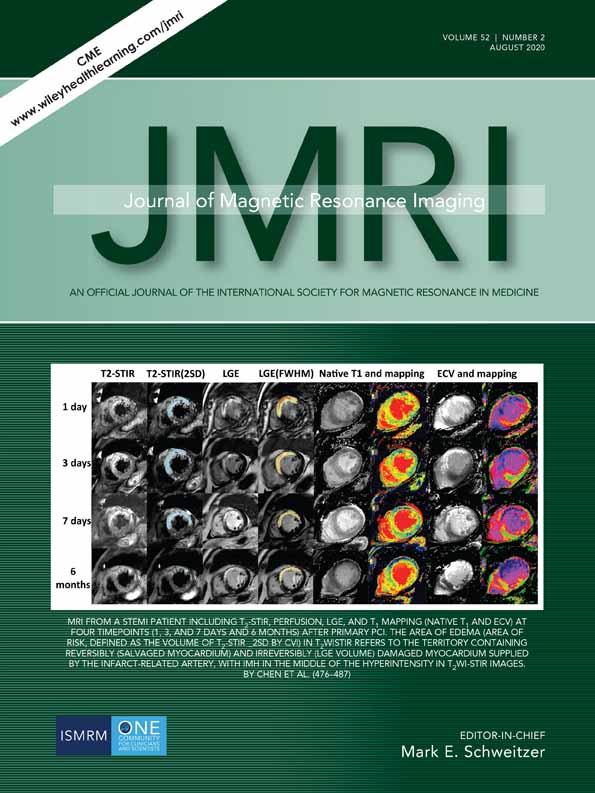Normative Pancreatic Stiffness Levels and Related Influences Established by Magnetic Resonance Elastography in Volunteers
Abstract
Background
Large-scale normative studies of pancreatic stiffness and potential influences have yet to be pursued via magnetic resonance elastography (MRE).
Purpose
To determine normative MRE-based pancreatic stiffness values and to examine related influential factors.
Study Type
Prospective.
Subjects
In all, 361 volunteers (men, 199; women, 162) with a median age of 54.0 years and a median body mass index (BMI) of 22.86 kg/m2 were prospectively recruited. Those with no histories of smoking, alcohol abuse, and diabetes mellitus (DM) were grouped as healthy volunteers, designating all others as positive controls.
Field Strength/Sequence
Each volunteer underwent 3.0T pancreatic MRI at a frequency of 40 Hz.
Assessment
Pancreatic stiffness values, pancreatic width and volume, waist circumference, and wave distance were measured in all subjects.
Statistical Tests
Multiple linear regression analyses were performed to determine variables that influence MRE-determined stiffness.
Results
The mean pancreatic stiffness in all volunteers was 1.20 ± 0.16 kPa. Stiffness levels in positive control volunteers proved significantly greater than levels in healthy volunteers (1.29 ± 0.17 kPa vs. 1.14 ± 0.13 kPa; P < 0.001). In multiple linear regression analysis, sex (P = 0.004), BMI (P < 0.001), pancreatic width (P = 0.005), smoking (P < 0.001), alcohol abuse (P < 0.001), and DM (P = 0.001) emerged as significant independent factors impacting pancreatic stiffness. Smoking, alcohol abuse, DM, and wide pancreas were associated with greater pancreatic stiffness (coefficients = 0.202, 0.183, 0.149, and 0.160, respectively), while reduced pancreatic stiffness corresponded with female sex and larger BMI (coefficient = −0.155 and −0.192, respectively).
Data Conclusion
MRE-based pancreatic stiffness values are impacted by sex, BMI, pancreatic width, smoking, alcohol abuse, and DM. Reference values are essential for future clinical studies.
Level of Evidence: 1
Technical Efficacy: Stage 2
J. Magn. Reson. Imaging 2020;52:448–458.
Conflict of Interest
None of the authors have conflicts of interest or specific financial interests with respect to this subject matter.




